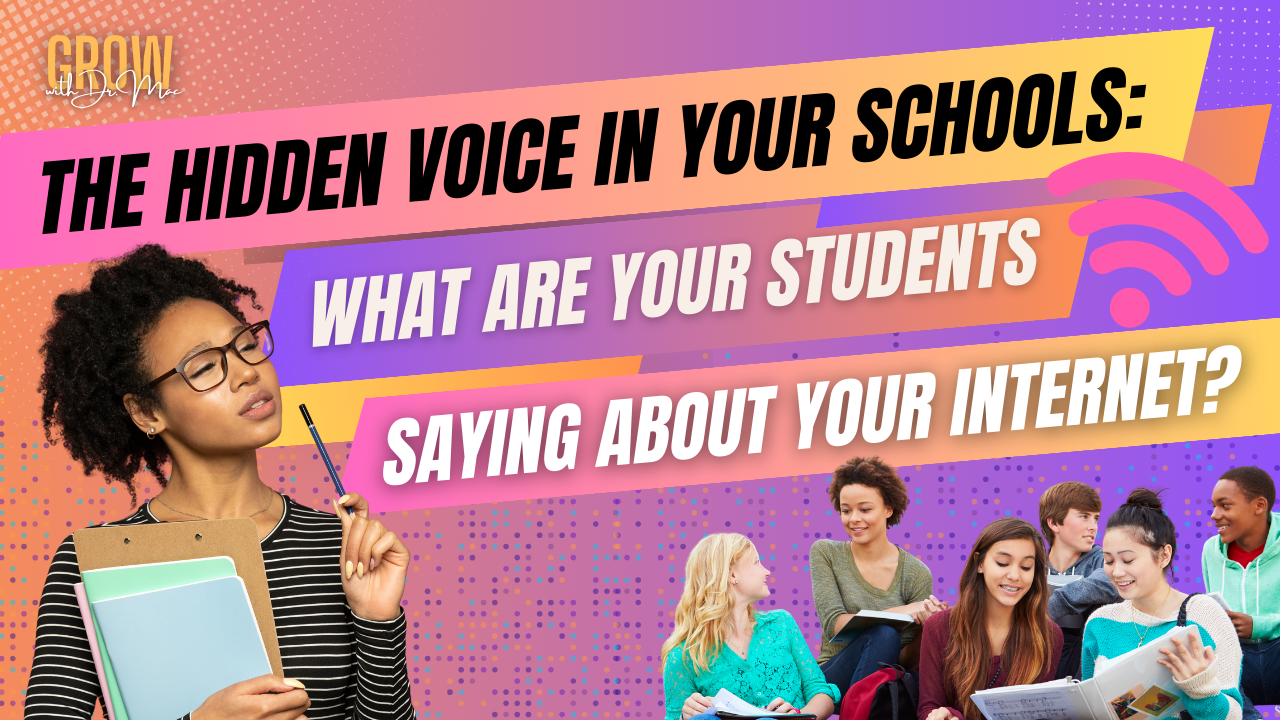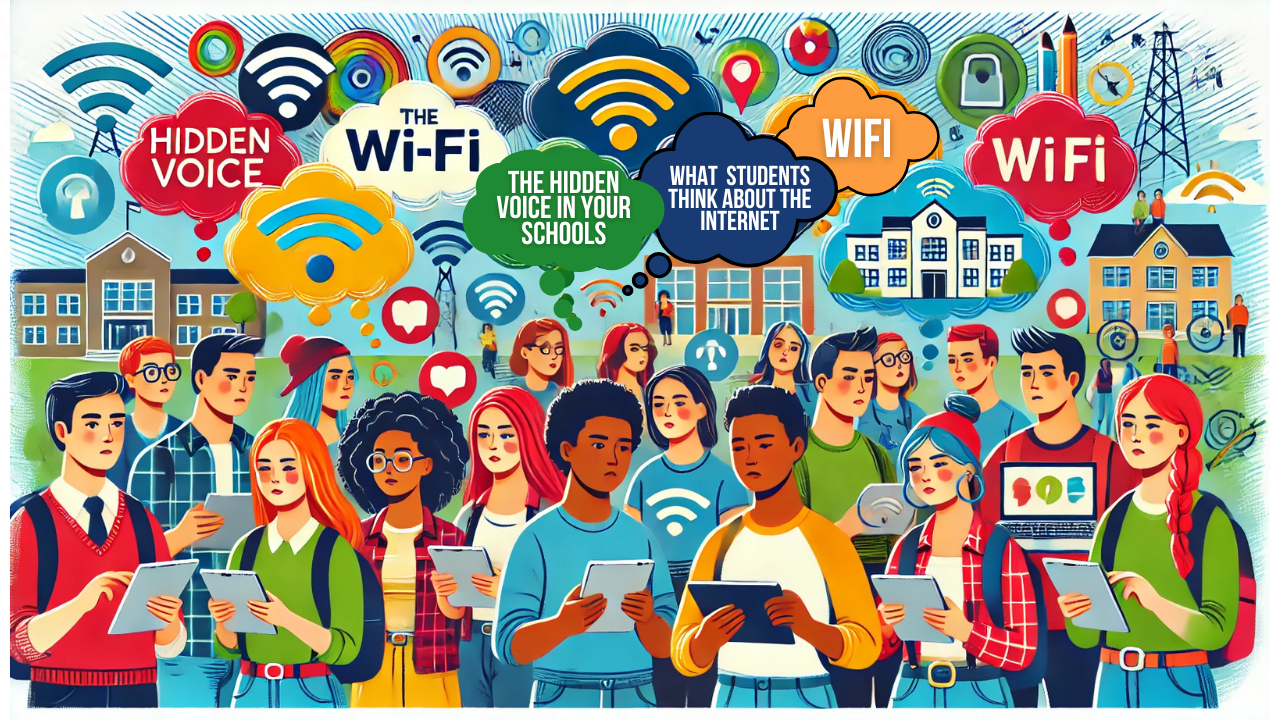The Hidden Voice in Your School's Tech: What Are Your Students Saying About Their Internet Experience?
Jan 19, 2025
In today’s technology-driven classrooms, the student experience with internet connectivity plays a crucial role in their learning outcomes. From accessing digital textbooks to participating in interactive online lessons, students rely heavily on a stable and reliable internet connection. But have you ever stopped to ask: What are your students saying about their internet experience?
It's amazing how honest our students are, yet we sometimes overlook their input when it should be a key component in enhancing their learning experience. From my experience, students often have specific, valuable insights that aren't always documented or leveraged to improve their experience. This is why it's crucial to create intentional opportunities to understand and address students' day-to-day interactions with their devices and access to school resources.

Why Student Feedback Matters
Understanding the student perspective on internet connectivity can reveal critical insights into their overall learning experience. Poor internet performance can lead to frustration, missed opportunities, and disengagement. Conversely, a seamless online experience can enhance participation, improve collaboration, and empower students to excel.
When students feel their needs are heard and addressed, it fosters a sense of ownership and engagement in their education. It also allows schools to make data-driven decisions to enhance technology infrastructure and support systems.
Common Internet Challenges Students Face
Here are some common complaints students might have about their internet experience:
- Slow Connection Speeds: "The videos take forever to load."
- Frequent Disconnections: "I keep losing connection in the middle of my assignments."
- Limited Access: "Some websites I need for research are blocked or inaccessible."
- Device Overload: "The Wi-Fi gets slow when too many students are online at once."
- Inconsistent Coverage: "The signal is weak in some areas of the school."
These challenges can hinder productivity and lead to a negative perception of technology in the classroom.
How to Gather Feedback from Students
To improve the internet experience for students, it’s essential to understand their pain points. Here are some effective ways to gather their feedback:
1. Surveys and Questionnaires
Create digital surveys with questions like:
- How would you rate the internet speed in your classrooms?
- Do you encounter any issues while accessing online learning tools?
- What suggestions do you have for improving your internet experience?
Tools like Google Forms or Microsoft Forms make it easy to distribute and analyze responses.
2. Focus Groups
Organize small group discussions with students from different grade levels to understand their experiences. Encourage them to share specific examples and propose solutions.
3. Feedback Through Student Council
Engage the student council to collect feedback from their peers. They can provide a representative perspective and advocate for improvements on behalf of the student body.
4. Anonymous Suggestion Boxes
Provide both physical and digital suggestion boxes where students can share their experiences without hesitation.
5. Classroom Discussions
Teachers can incorporate a brief feedback session into their lessons. This allows students to share their thoughts in real-time.
Improving the Internet Experience Based on Feedback
Once feedback is collected, schools can take actionable steps to address the issues:
- Upgrade Infrastructure Invest in high-speed internet connections and modern networking equipment to handle increased demand.
- Optimize Network Usage Implement bandwidth management tools to prioritize educational activities over non-essential traffic.
- Enhance Coverage Use Wi-Fi extenders or additional access points to eliminate dead zones and ensure consistent coverage throughout the campus.
- Provide Support and Training Equip students and teachers with knowledge about troubleshooting common connectivity issues and optimizing device settings.
- Monitor and Maintain Regularly assess network performance and address issues proactively before they impact the learning experience.
Building a Culture of Continuous Improvement
Creating a positive internet experience for students isn’t a one-time effort. It requires ongoing engagement, regular updates, and a commitment to listening to students’ voices. When schools prioritize student feedback, they create an environment where technology supports learning, rather than hindering it.
By asking, "What are your students saying about their internet experience?" and taking meaningful action, schools can ensure they’re meeting the needs of their learners and empowering them to thrive in a connected world.
Author
Jocelyn “Dr. Mac” McDonald. Ph.D.
Book with Meet Me
SUBSCRIBE TO THE BLOG
Don't miss the opportunity to transform your instructional and leadership practices. Subscribe now and receive transformative insights and strategies with every post.
We hate SPAM. We will never sell your information, for any reason.

